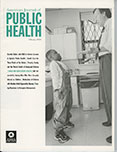Abstract:
OBJECTIVES: This study examined the relative perceived effectiveness of 30 antidrug public service announcements (PSAs) and assessed the extent to which judgments of effectiveness are related to judgments of realism, amount learned, and positive and negative emotional responses.
METHODS: Data were obtained from 3608 students in grades 5 through 12 in 10 schools. The ethnically diverse sample was 50.8% male. Students in 5 experimental conditions viewed sets of 6 antidrug PSAs and filled out a brief evaluation questionnaire following each PSA. Those in the control condition viewed a non-drug-related television program.
RESULTS: The relative perceived effectiveness of the 30 PSAs varied considerably. Sixteen were rated as significantly more effective, and 6 as significantly less effective, than the control program. Relative rated effectiveness was highly related to realism (r =.87), amount learned (r =.88), negative emotion (r =.87), and positive emotion (r = -.35).
CONCLUSIONS: Evaluative research is necessary to prevent broadcast of PSAs that could have a negative impact. PSAs should point out the negative consequences of drug use behavior rather than telling adolescents to “just say no.”
Authors
- Martin Fishbein
- Ina von Haeften
- Kathleen Hall Jamieson
- Robin Nabi
- Eric Zimmer



